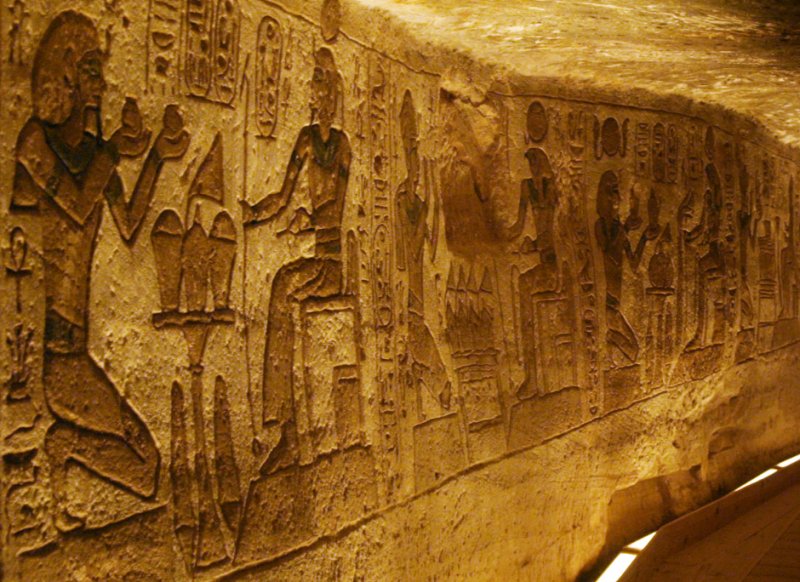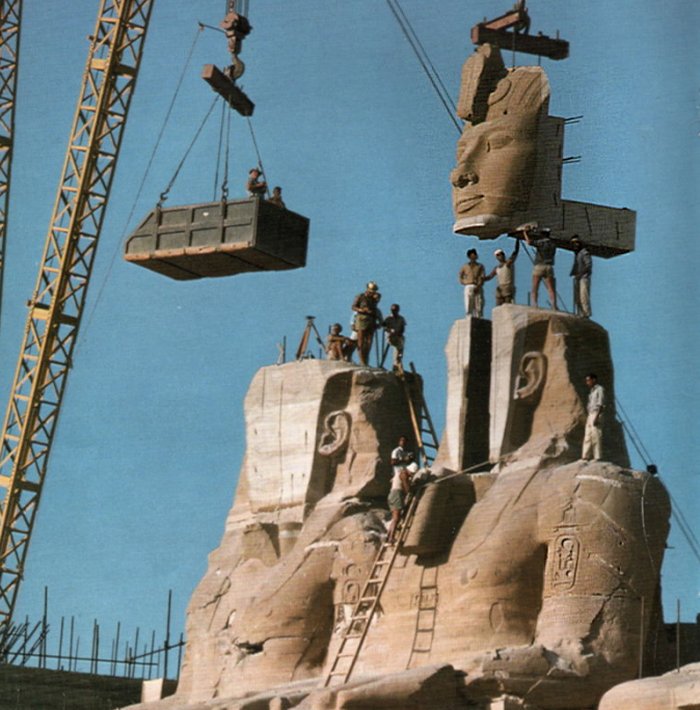Abu Simbel – Spectacular Ancient Egyptian Temples Unique In Design And Size
Angela Sutherland - AncientPages.com - Many spectacular structures of antiquity, such as the pyramids, temples of Luxor and Karnak, Ramesseum, Abu Simbel, and others, attest to ancient Egypt's superior civilization.
Abu Simbel - Image credit: Angel Aroca Escámez - CC BY-SA 3.0
One of them is Abu Simbel, now an archaeological site located in Muhafaz Aswan, on the West Bank of the Nile, in southern Egypt, close to the border with Sudan.
Built between 1264 and 1244 BC (or 1244 and 1224 BC) during the reign of Pharaoh Ramesses II, Abu Simbel represents a vast complex of two prominent temples reaching 56 m deep into the rock.
It took twenty years to carve out the temples of a solid mountainside on the West Bank of the Nile in Lower Nubia, close to the border with Sudan. One of the temples celebrates Ramses II's victory over the Hittite Empire at the Battle of Kadesh in 1274 BC. The other commemorates the pharaoh's love for his favorite queen, Nefertari.
Interior of Ramses II's temple at Abu Simbel. Image credit: qwelk - Public Domain
The entrance of the Great Temple is guarded by four (20 m high) giant statues representing Ramesses II seated on a throne and wearing the double crown of Upper and Lower Egypt. Inside, there are eight more of his sculptures. The statues of the king and his queen are about 10 m (33 ft) high.
Next to Ramesses's legs are smaller statues depicting his chief wife, Nefertari, his queen mother, Mut-Tuy (Tuya), his first two sons, and six daughters. The temple is dedicated to the pharaoh and the sun gods Amon-Ra and Ptah, the god of arts and crafts, and Ra-Horakty, the god of the "morning sun."
Without a doubt, the temples are unique in both design and size.
"The front of the main temple is 31 meters (102 ft) high. Cutting through two columned halls, the inner passage reaches 54.8 (180 ft) back into solid rock." 1
The decorations inside the first chamber are reliefs commemorating the battles of Ramesses II at the Battle of Kadesh.
Inside the great temple of Ramses II at Abu Simbel. Credit: Adobe stock - Nick Brundle
"The walls of the halls are covered with superbly preserved reliefs showing Ramesses conquering his enemies in the mighty battle of Kadesh that he fought in his fifth year as king. Almost 1500 figures of soldiers are carved and painted here. Side chambers off the hall were perhaps store chambers for the temple's wealth." 1
There are also images of the deities to whom the temple was dedicated and of Ramesses II himself. In addition, the rooms are decorated with precious paintings and reliefs.
The Small Temple honors Hathor, the goddess of love and beauty, and Queen Nefertari, Ramesses' favorite wife. The statues of Nefertari - equal in height to her husband's figures - attest to the great respect that Ramses II gave her.
Six giant statues (10 m (33 ft) high) decorate the facade of this temple. Two depict the queen placed between four others, representing Ramesses II.
Built by Pharaoh Ramses II, these two structures unquestionably testify to the outstanding building achievements of this ruler and his power as the king. Ramses wanted to show the power of ancient Egypt to the newcomers from Nubia.
Phenomenon Associated With The Great Temple In Abu Simbel
A beautiful phenomenon associated with the Great Temple occurs twice a year, initially on February 19 and October 21. The rising sun illuminates the image of Amun-Ra and Ramesses II, and after some time, also Re-horachty. Interestingly, only the sun's rays never illuminate the depiction of Ptah. After the transfer of the temple, the phenomenon was still preserved, although postponed by one day.
With time, the marvelous work of Pharaoh Ramses II has been forgotten and covered by sand. In March 1813, the Swiss traveler Johann Ludwig Burckhardt (1784 – 1817) stumbled upon the sand-covered ruins of the Great Temple of Ramesses II at Abu Simbel. He attempted to excavate the temple entrance, but he failed. He later told his friend Giovanni Battista Belzoni about the ruins and returned in 1817 to excavate the temple.
Danger Of Flooding And Time To Move The Temples To Safe Place
In 1964, the salvage of the Abu Simbel temples began. The rising waters of the Nile threatened these historical landmarks (along with some others) due to the construction of the Aswan High Dam.
The statue of Ramses the Great at the Great Temple of Abu Simbel is reassembled after having been moved in 1967 to save it from being flooded. Source
It was decided that the structures needed to be moved. The most ambitious project was to lift the temples of Abu Simbel.
All involved in the project had to transport the temples and reassemble them in a safe place about 65 m higher than their previous location. Then, the hard work began at the site. Engineers, archaeologists, and ordinary workers equipped with heavy lifting and cutting equipment reached Nubia. Soon, 807 blocks from the main temple, 235 meters from the smaller ones, and almost 7000 blocks of rock framing both Abu Simbel temples were transported to the prepared warehouse.
The works were completed in 1966.
In the meantime, the temples' original place had already been flooded.
The project was both extensive and challenging to carry out, but the valuable landmarks of the country were saved. The cost of the operation was approximately $ 36 million. The temples were included in the UNESCO World Heritage list in 1979.
Written by – A. Sutherland - AncientPages.com Senior Staff Writer
Updated on December 17, 2023
Copyright © AncientPages.com All rights reserved. This material may not be published, broadcast, rewritten or redistributed in whole or part without the express written permission of AncientPages.com
More From Ancient Pages
-
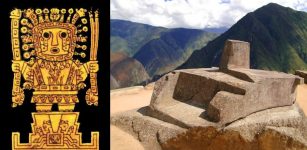 Mysterious And Sacred Intihuatana Stone Of The Inca Was More Than Just An Astronomy Calendar
Archaeoastronomy | May 8, 2018
Mysterious And Sacred Intihuatana Stone Of The Inca Was More Than Just An Astronomy Calendar
Archaeoastronomy | May 8, 2018 -
 Medicine in Antiquity: From Ancient Temples To Roman Logistics
Archaeology | Apr 13, 2018
Medicine in Antiquity: From Ancient Temples To Roman Logistics
Archaeology | Apr 13, 2018 -
 3.2 Million-Year-Old ‘Lucy’ Could Walk On Two Legs – First Hominin Muscle Reconstruction
Archaeology | Jun 20, 2023
3.2 Million-Year-Old ‘Lucy’ Could Walk On Two Legs – First Hominin Muscle Reconstruction
Archaeology | Jun 20, 2023 -
 7th Century Old Cistern Among Recent Finds In Medieval City Of Beçin, Turkey
Archaeology | Aug 21, 2020
7th Century Old Cistern Among Recent Finds In Medieval City Of Beçin, Turkey
Archaeology | Aug 21, 2020 -
 Obscure History Of Atlantean Statues In Ancient Toltecs’ City Of Tula
Artifacts | Oct 19, 2020
Obscure History Of Atlantean Statues In Ancient Toltecs’ City Of Tula
Artifacts | Oct 19, 2020 -
 Pyramid Of Djoser May Have Been Constructed Using Hydraulic Lift Technology – Scientists Say
Archaeology | Aug 5, 2024
Pyramid Of Djoser May Have Been Constructed Using Hydraulic Lift Technology – Scientists Say
Archaeology | Aug 5, 2024 -
 Unusual Stone Carvings And Medieval ‘Witching’ Marks To Ward Off Evil Spirits Discovered In England
Archaeology | Oct 29, 2020
Unusual Stone Carvings And Medieval ‘Witching’ Marks To Ward Off Evil Spirits Discovered In England
Archaeology | Oct 29, 2020 -
 On This Day In History: Knights Templars’ Jacques de Molay Burned At The Stake – On Mar 18, 1314
News | Mar 18, 2017
On This Day In History: Knights Templars’ Jacques de Molay Burned At The Stake – On Mar 18, 1314
News | Mar 18, 2017 -
 The Kitchen God In Ancient Vietnamese Tradition Is Still Alive
Featured Stories | Feb 23, 2016
The Kitchen God In Ancient Vietnamese Tradition Is Still Alive
Featured Stories | Feb 23, 2016 -
 Illuminati: Facts And History About The Secret Society
Featured Stories | Mar 30, 2017
Illuminati: Facts And History About The Secret Society
Featured Stories | Mar 30, 2017 -
 Ancient Secret Tunnel Discovered Beneath The Pyramid Of The Moon In Mexico’s Teotihuacan
Archaeology | Jul 8, 2017
Ancient Secret Tunnel Discovered Beneath The Pyramid Of The Moon In Mexico’s Teotihuacan
Archaeology | Jul 8, 2017 -
 Will Star Goddess Astraea Return To Earth With Second Golden Age Or Apocalypse?
Featured Stories | Aug 1, 2020
Will Star Goddess Astraea Return To Earth With Second Golden Age Or Apocalypse?
Featured Stories | Aug 1, 2020 -
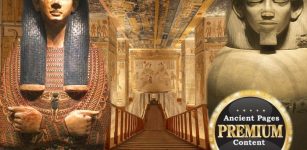 Forbidden Antediluvian Egyptian Secrets Revealed By Initiated Masters Show Most We Know About Egypt Is Wrong
Ancient Mysteries | Aug 6, 2020
Forbidden Antediluvian Egyptian Secrets Revealed By Initiated Masters Show Most We Know About Egypt Is Wrong
Ancient Mysteries | Aug 6, 2020 -
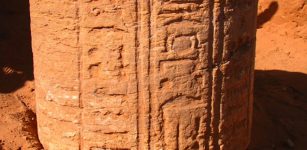 Abu Erteila’s Lost Temple And The Meroitic Empire: New Discoveries Shed Light On Nubian Civilization
Archaeology | Jan 14, 2016
Abu Erteila’s Lost Temple And The Meroitic Empire: New Discoveries Shed Light On Nubian Civilization
Archaeology | Jan 14, 2016 -
 Ancient People Handled Sun Exposure Better Than Modern People – An Anthropologist Explains Why
Featured Stories | Sep 21, 2022
Ancient People Handled Sun Exposure Better Than Modern People – An Anthropologist Explains Why
Featured Stories | Sep 21, 2022 -
 Scientists Explore How Neanderthals Caught Birds In Caves For Food
Archaeology | Sep 16, 2021
Scientists Explore How Neanderthals Caught Birds In Caves For Food
Archaeology | Sep 16, 2021 -
 Ruins Of Xunantunich – Mayan City That Once Flourished
Civilizations | Jan 12, 2022
Ruins Of Xunantunich – Mayan City That Once Flourished
Civilizations | Jan 12, 2022 -
 Three Roman Shipwrecks Discovered Off Tunisian Coast – One Is 2,000-Year-Old
Archaeology | Jun 9, 2023
Three Roman Shipwrecks Discovered Off Tunisian Coast – One Is 2,000-Year-Old
Archaeology | Jun 9, 2023 -
 Hidden Prophecies Inside The Great Pyramid Of Giza Discovered By Scientists
Ancient Mysteries | Jun 21, 2017
Hidden Prophecies Inside The Great Pyramid Of Giza Discovered By Scientists
Ancient Mysteries | Jun 21, 2017 -
 Morrígan: Shape-Shifting Phantom Queen And Her Meeting With Irish Hero Cuchulainn
Celtic Mythology | Aug 7, 2017
Morrígan: Shape-Shifting Phantom Queen And Her Meeting With Irish Hero Cuchulainn
Celtic Mythology | Aug 7, 2017


